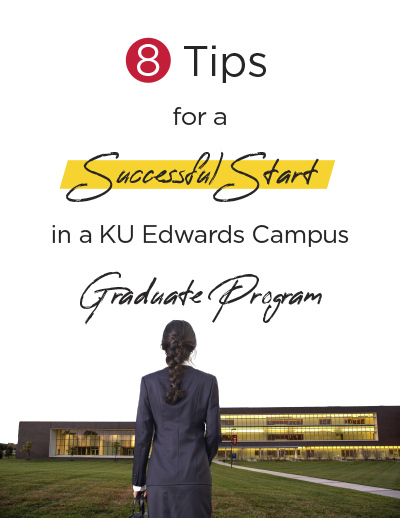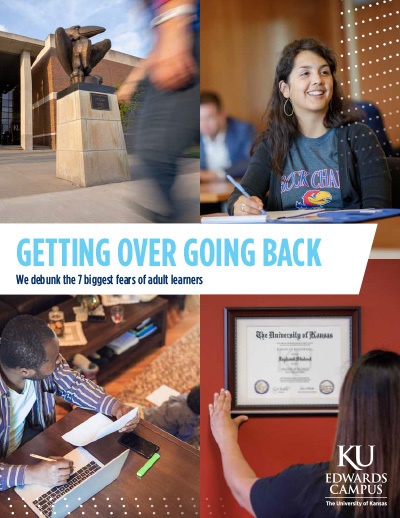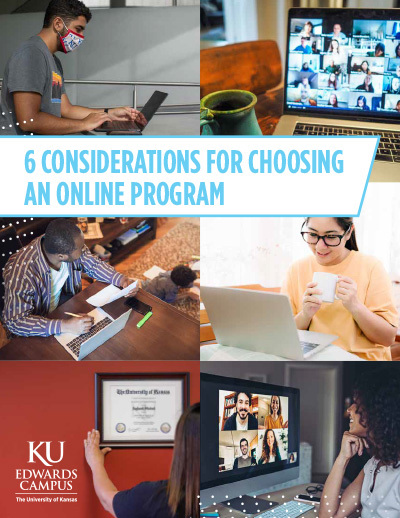How to Deliver an Effective Business Presentation
What you say is important. How you say it is critical.
That’s the key thing to remember when you’re about to make a big business presentation, whether in person or virtual, says Dr. Lee Stuart, D.B.A., leadership instructor at KU Edwards Campus (KUEC).
"The research says that between 90 and 92 percent of what an audience will remember about a presentation is based not on what was said but how it was said,” Stuart said. “Was it compelling? Was it memorable? Was it clear? What were four or five key things that I can take away?"
Getting it right can mean the difference between success and failure, no matter how good your idea.
“Horrible presentation will kill excellent content every time,” Stuart said.
Perhaps because the stakes are so high, Stuart’s presentation on presentations — “Say It Simply & Smartly” — is one of the most-requested seminars he gives at KU. The daylong course teaches Kansas City area business professionals to make interesting and well-organized presentations — and even gives some tips on how to overcome the sometimes-paralyzing terrors of public speaking.
"At some point in all of our careers, we have to go to the boss — whoever the boss may be — and make a presentation to request resources, a project status update, whatever it may be,” he said. “You have to be able to very effectively design and communicate a presentation to do that."
Three tips from Stuart:
1. Start with the end. If you write the closing first, Stuart said, it helps you identify the “closing outcome” you’re trying to reach with the presentation.
Without that goal constantly in sight, he said, it’s easy to bury an audience in extraneous information. Focus is important.
“We actually teach the workshop participants to design in soundbites — key messages that you would want your audience to replay a day later or a week later,” Stuart said. “That seems kind of intuitive, but it’s not so much because people obsess about what content they're going to convey.”
2. Consider how you look and sound. A confident presentation goes a long way toward achieving your goals, Stuart said. But a stammering, slouching presentation won’t get far — even if your ideas are first-rate.
“Pay attention to your posture, your vocal inflections, your vocal variety — which means not always speaking on and on for 20 minutes, so that you have no idea when one sentence ends and the next sentence begins,” Stuart said.
He advises presenters to move with purpose and make eye contact. “Rest your eyes on individuals,” he said. “Do not scan the audience.”
3. Don’t just end your presentation — come to a conclusion: “Some people just literally stop talking and then there's that awkward four seconds of silence,” Stuart said. “So I actually give my participants points if they do nothing more than say, ‘That concludes my presentation.’”
The “Say It Simply & Smartly” workshop, which counts toward the KU Professional Leadership Certificate, will help you:
- Organize information for maximum impact and retention
- Conduct thorough audience analysis
- Select a presentation strategy based on the topic and purpose
- Utilize strong openers and compelling closings
- Manage non-verbal communication cues
- Manage verbal pauses and "tics"
This and the other leadership workshops combine academic research with real-world know-how that business professionals can take back and immediately apply in their workplaces.
“I always start off with legitimate scholarly theory,” Stuart said. "But then we boil it down to: ‘Let's go to work and apply it.’ I can stand there and teach you theory all day, but you have to be able to carry out tools and techniques that you can put into practice.”
Don't miss Dr. Lee Stuart's upcoming "Say it Simply and Smartly" sessions.





